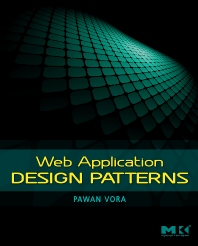Books in Computer science
Books in Computer science
The Computing collection presents a range of foundational and applied content across computer and data science, including fields such as Artificial Intelligence; Computational Modelling; Computer Networks, Computer Organization & Architecture, Computer Vision & Pattern Recognition, Data Management; Embedded Systems & Computer Engineering; HCI/User Interface Design; Information Security; Machine Learning; Network Security; Software Engineering.
- 2nd Edition
- March 2, 2009
- Michael J. Donahoo + 1 more
- English
- Paperback9 7 8 0 1 2 3 7 4 5 4 0 8
- eBook9 7 8 0 0 8 0 9 2 3 2 1 5

TCP/IP Sockets in C
- 1st Edition
- February 24, 2009
- Leo Dorst + 2 more
- English
- Hardback9 7 8 0 1 2 3 7 4 9 4 2 0
- eBook9 7 8 0 0 8 0 9 5 8 7 9 8

Geometric Algebra for Computer Science (Revised Edition)
- 1st Edition
- February 23, 2009
- Pawan Vora
- English
- Paperback9 7 8 0 1 2 3 7 4 2 6 5 0
- eBook9 7 8 0 0 8 0 9 2 1 4 5 7

Web Application Design Patterns
- 1st Edition
- February 18, 2009
- Clive Maxfield
- English
- Paperback9 7 8 1 8 5 6 1 7 6 2 1 7
- eBook9 7 8 0 0 8 0 9 5 0 8 0 8

FPGAs: World Class Designs
- 1st Edition
- February 2, 2009
- Dorothy C. Attaway
- English
- eBook9 7 8 0 0 8 0 9 4 3 2 5 1
- eBook9 7 8 0 1 2 3 8 5 9 1 8 1

Matlab
- 1st Edition
- January 7, 2009
- Nevin Berger + 3 more
- English
- Paperback9 7 8 0 1 2 0 8 8 5 8 2 4
- eBook9 7 8 0 0 8 0 9 1 6 7 1 2

Effective Prototyping with Excel
- 2nd Edition
- December 15, 2008
- Patrick T. Tam
- English
- Paperback9 7 8 0 1 2 6 8 3 1 9 2 4
- eBook9 7 8 0 0 8 0 9 2 6 2 4 7

A Physicist's Guide to Mathematica
- 1st Edition
- December 12, 2008
- John Buford + 2 more
- English
- Hardback9 7 8 0 1 2 3 7 4 2 1 4 8
- eBook9 7 8 0 0 8 0 9 2 1 1 9 8

P2P Networking and Applications
- 3rd Edition
- December 5, 2008
- Clive Maxfield
- English
- Paperback9 7 8 1 8 5 6 1 7 5 0 7 4
- eBook9 7 8 0 0 8 0 9 4 9 5 0 5

Bebop to the Boolean Boogie
- 3rd Edition
- December 3, 2008
- Peter Wayner
- English
- Paperback9 7 8 0 1 2 3 7 4 4 7 9 1
- eBook9 7 8 0 0 8 0 9 2 2 7 0 6

Disappearing Cryptography